As we reported in our last blog post, we kept several key mechanisms of our robot “out of the bag” as part of our official, 30-pound “withholding allowance” after we stored our competition robot until our first tournament next weekend. The most important items we kept out were the polycarbonate claw that will manipulate both of the game pieces, and the intake that rolls the Cargo ball into the claw. Our claw handles the Hatch Panel disk and Cargo ball perfectly once it acquires them, but we have had trouble with the ball bouncing around after it’s rolled into the robot by the intake, and before the claw can grasp it. That wastes time and risks our losing control of the ball as the robot drives around.
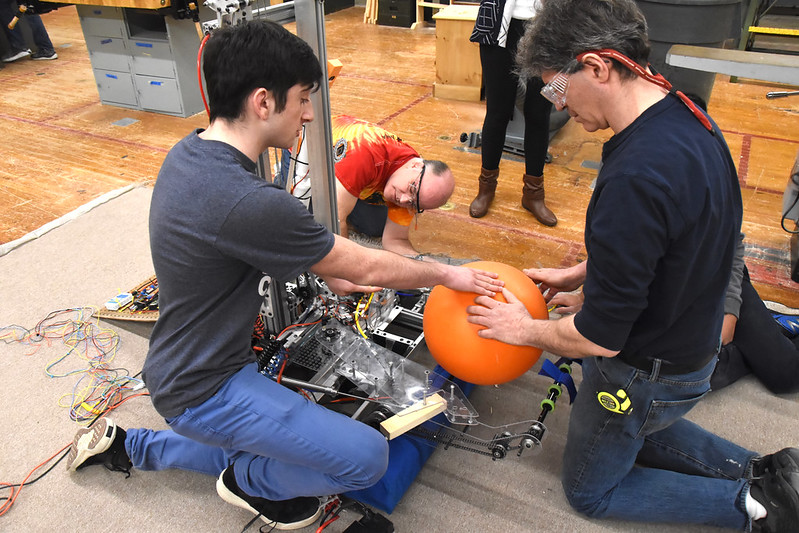
This week we moved the claw forward so that it can grab the ball earlier in the intake process, and also moved forward the piston that pushes the ball out of the claw so that it can stabilize the ball within the claw. We removed a bar across the front of the robot that we added a few weeks ago. It was supposed to stabilize the ball as it rolled in, but was not doing its job. Now that it’s gone, voilà, the ball goes right into the claw and stays there until we’re ready to push it out! Thanks to having a second robot on which to test these improvements, we can go to the SE Mass. District Event in Bridgewater confident that our robot will perform well.

We also continued work on our bumpers, which are both complicated and very cool because their cloth covers can be inverted without removing them to change from red to blue, depending on our alliance color for that match.
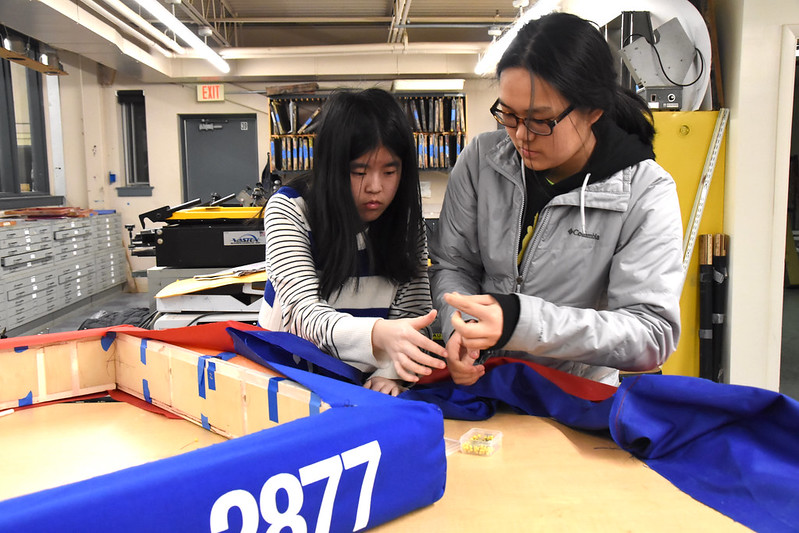
A tie was broken in the team-wide vote for a robot name by the flip of a coin. Our 2019 robot will be named Thanos, (after the Marvel Comics villain,) which means “immortal” in Greek.
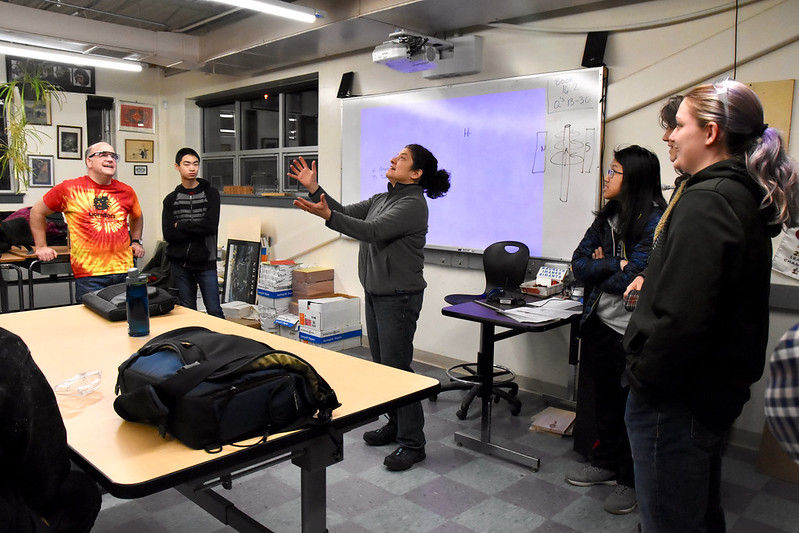
Our strategy council held a session on data mining, led by project management mentor and sports statistics expert Dan Lavoie. We hope to use these skills in our analysis of robot performance data from New England FRC teams at our tournaments.
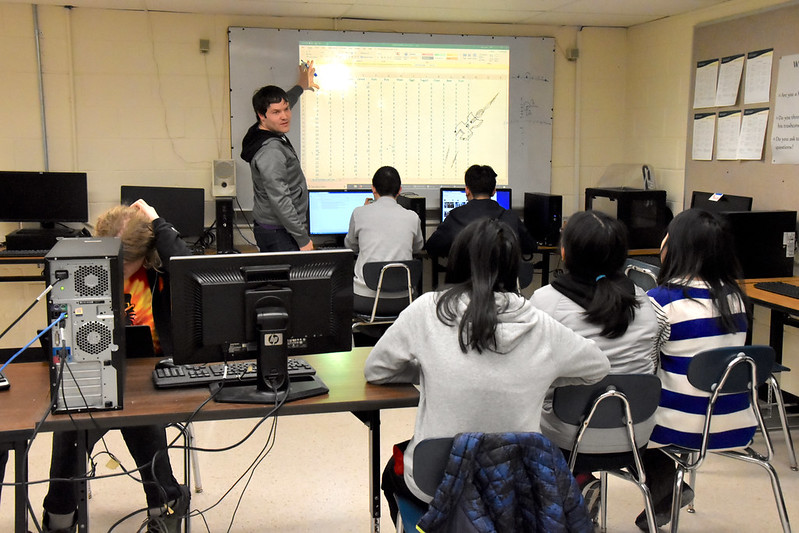
We started to repair the ball-throwing arms on our 2016 robot, which continues to get heavy use at outreach events. We will replace the long-lost adjustable arm tips with a simpler and more robust, spoon-like mechanism that can throw the ball repeatedly without breaking.
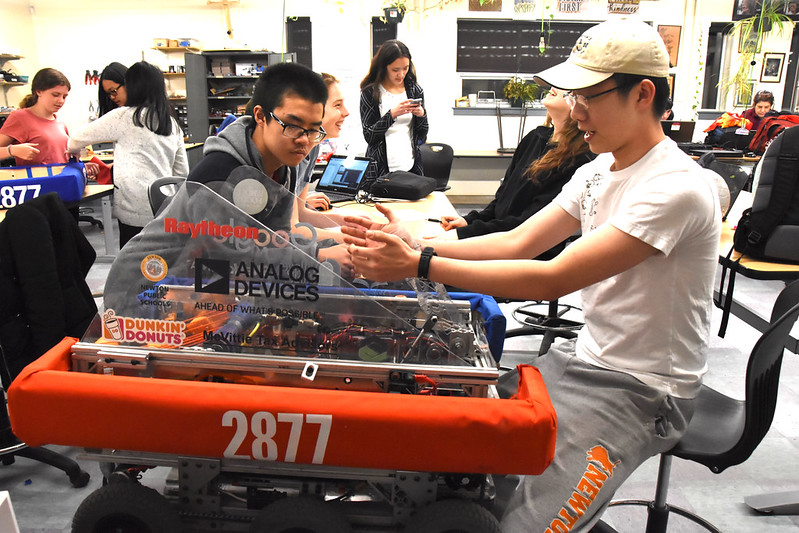
While our team engineers worked in their shop clothes this week to revise our intake mechanism a group of LigerBots went in business suits to the FIRST Southern New England Advocacy Conference. This was a two-day event designed to teach regional FIRST Robotics and FIRST Tech Challenge teams how to promote FIRST with our state governments, with the ultimate goal of securing state funding for STEM initiatives and FIRST teams. The conference was intended as a first step in building relationships with government officials and helping to educate them about FIRST.

On the first day of the conference five LigerBots and our electrical mentor, Carly, listened to presentations at Worcester Polytechnic Institute about how state laws are made and how to communicate effectively with politicians. They attended break-out sessions to practice what they planned say to our representatives.
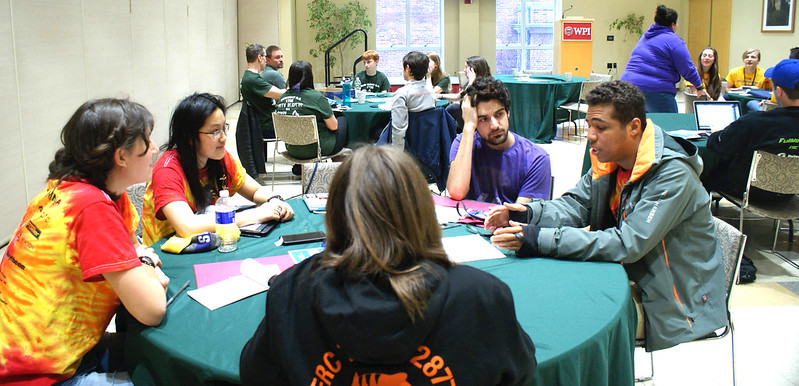
On the second day LigerBots went down to the Massachusetts State House in Boston to meet with four state legislators (or their staff) who represent Newton: representative Ruth Balser, state senator Cynthia Stone Creem, Catherine Anderson from the office of Senator Creem, Emily Izzo from the office of representative John Lawn, and Amani Mansour from the office of representative Kay Kahn.
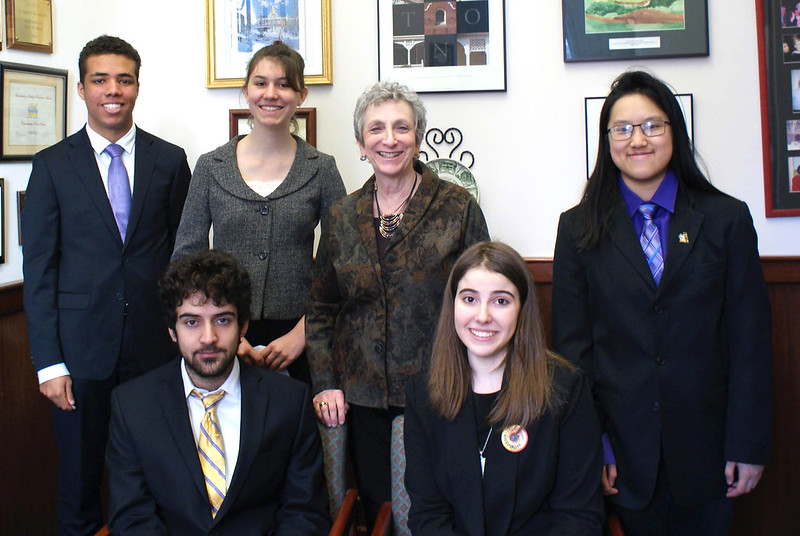
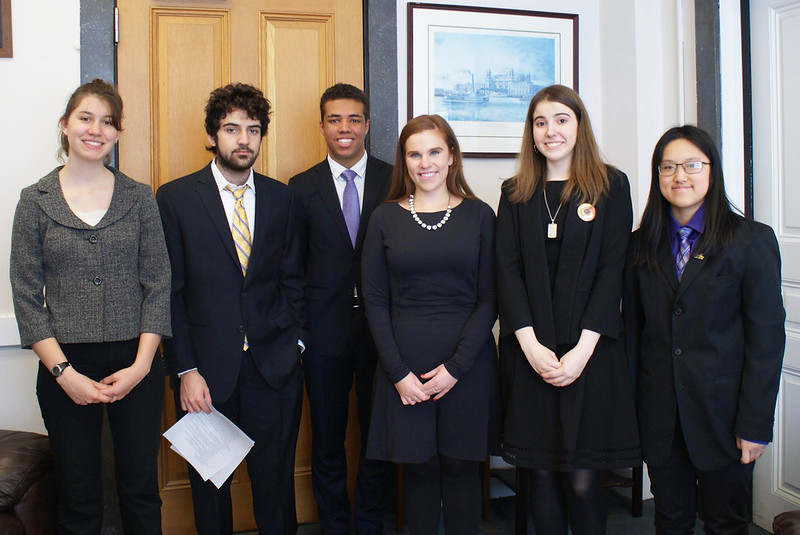
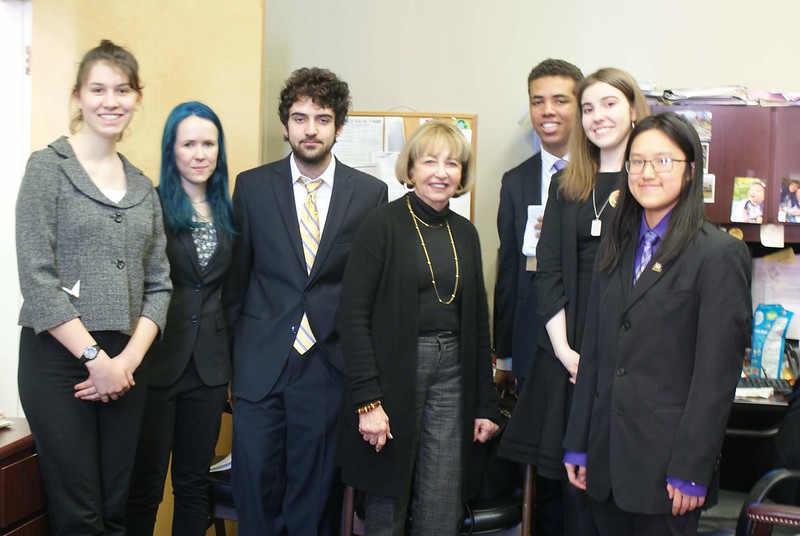

We hope to get to know our representatives better during the coming months and to talk to them frequently about funding STEM initiatives in Massachusetts. Coming up: the 2019 FIRST National Advocacy Conference next June, in Washington, DC!








